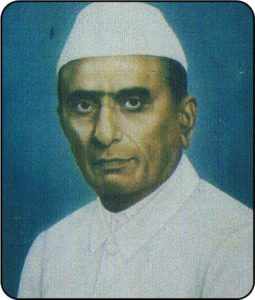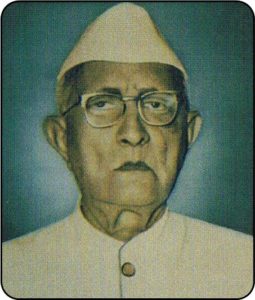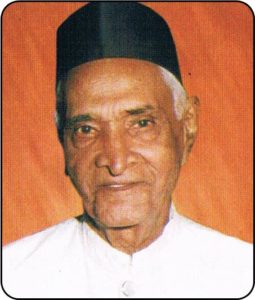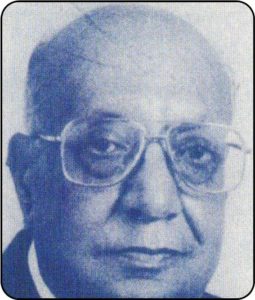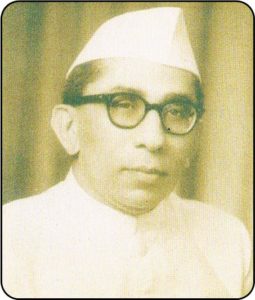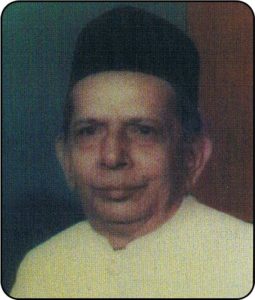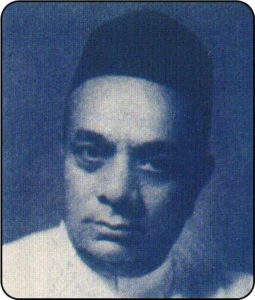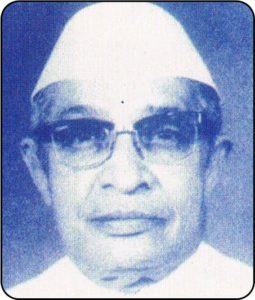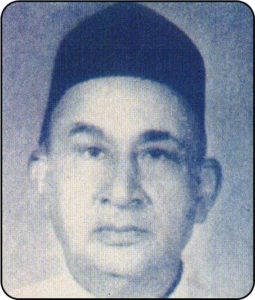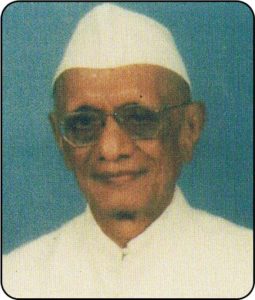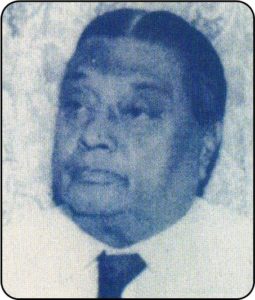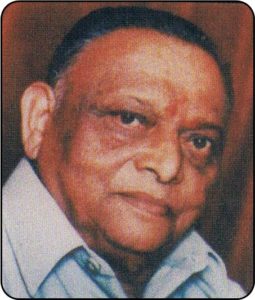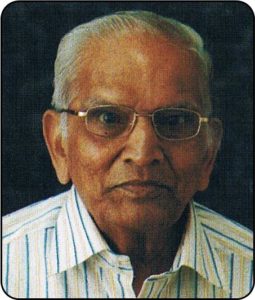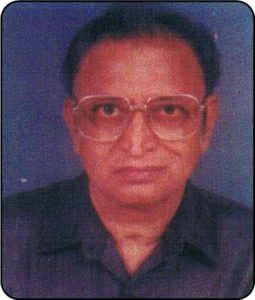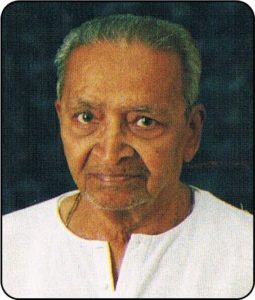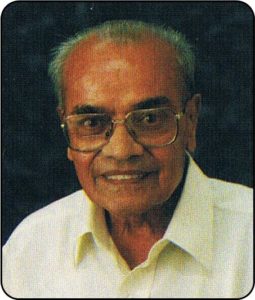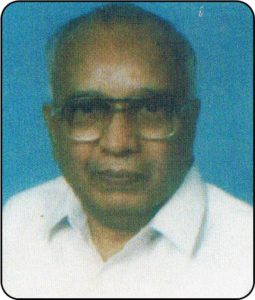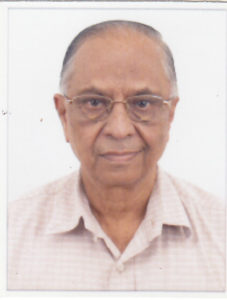Kapole – Our Roots
Everyone is proud of his/her community since it is bestowed upon by birth. India is known for people of diverse religions, languages and communities. Indian history reveals that originally there were four groups of people following different vocations. They were Brahmins, Kshatriyas, Vaishyas and Shudras. Brahmins studied and preached religion, Kshatriyas ruled and protected the population, Vaishyas conducted business and farming, whereas Shudras comprised of most of the working classes including artisans and craftsmen such as janitors, blacksmiths, carpenters. These vocations were interchangeable. So, belonging to a group was determined not by birth but rather by profession. However, over a period of time, this interchangeability became limited due to many reasons. Thus, professional communities were established and one’s community was determined by birth. Subsequently, each community was divided into smaller castes and each caste was further divided into sub-castes. We – Kapole’s – are basically Vaishyas – a Sanskrit word which means businessmen. In Gujarati, businessmen are called ‘Vaniyas’.
The Origin of the Term Kapole
The history of how the Kapole caste originated is really fascinating. There are a few mythological stories behind it, but the following one is the most well known. According to an ancient Sanskrit treatise called the Kundal Puran’, King Mandhak conquered a major portion of North India. He then commenced pilgrimage. He visited His Holiness Sri Kanva Rishi who resided in the Papanod Ashram (Monastery) located near a town called Prabhas Patan in Saurashtra. It was a famous place of worship and was southern tip of Saurasbatra, especially from the districts of Bhavnagar and Amreli. Even in these districts they were predominantly concentrated in the bigger towns such as Bhavnagar, Amreli, Mahuva, Rajula, Sihor, Jafravad, Lathi, Savar-Kundla, Delwada, Talaja. etc. A few families also lived in villages surrounding these towns.
Our Last Names
Our community is replete with various last names as you will find from this directory. Just as there is an interesting story behind the word Kapole, there are equally interesting anecdotes behind some of our last names. For example, with the blessings of Goddess Kankai, a son was born in the family of business tycoon Bhimshah and he was named Kankidas. The descendants of Kankidas are now called ‘Kanakias’. The family of a leading person named Virpal moved from the village of ‘Chhanjad’ to ‘Vala’ and they were then known as ‘Valias’. Kapole’s living in the village of ‘Chital are known as ‘Chitalia’ and similarly residents of the village ‘Gorakada’ are known as ‘Goradias’. Those who were grocers were known as ‘Gandhi’ or ‘Mody’ and those who were in the money lending business were called ‘Shroffs’. Those who were brokers were called ‘Dalal’ and those proficient in bookkeeping were called ‘Mehta’. In Gujarati, ‘Parakh’ means analysis or testing.Those who were proficient in testing were called ‘Parekh’. ‘Zaverat in Gujarati means jewelry; – those who were dealing in jewelry were called ‘Zaveri’. ‘Naanna’ in Gujarati means money or currency. Those who were in that business were called ‘Nanavati’. ‘Sangh’ means a group of people, especially ‘Pilgrims’. All those who went on a pilgrimage in groups were called ‘Sanghvi’. Those who were – dealing in herbs grown in jungles were know as ‘Jangia’. Those who were dealing in cloth (Kapad, in Gujarati) were known as ‘Kapadia’. Those who were of joyful and carefree nature were called ‘Laheri’.
Kapole’s Before a Few Centuries
India was the main source of supply of spices, herbs, mulmul cloth and other goods to Europe in the 14th and 15th century. Europeans, especially the Portuguese. French and British, were anxious to have their own trading establishments in India. The Portuguese captured a port town of Div in Saurashtra in 1592 and started their business. They badly needed some. local suppliers. Kapole Baniyas, who were living in the neighboring towns and were already conducting similar business, moved to Div.
They became major suppliers to the Portuguse and one family had a monopoly of supplying food grains to them. But there was not much law and order in Div under Portuguese rule. They forfeited the properties of Hindus who died without any heirs. They also converted Hindu orphan children to Christianity and started interfering in business. Then, Kapole’s of Div began thinking of leaving the area. During that very period, the British had arrived in India and had established in Surat. But the local rulers-first Mohmedans and then Marathas – were waging frequent battles with the British settlers.
Pre-conditions for Immigration to Bombay
After several years, the British moved their trading post from Surat to Bombay, which at that time consisted of a group of seven islands inhabited by local fishermen. There was not much business activity there. The British were anxious to develop Bombay into a big trading center, and started giving incentives to attract businessmen from surrounding regions to settle there, Shri Nema Parekh, a prominent Kapole businessman of Div, saw a big opportunity in this. In 1677, he proposed ten stipulations to the British to consider moving to Bombay. They were:i.) They should be given land to construct their houses.ii.) They must have freedom to observe their own religion and there should be no religious persecution.
Then they began relocating to other parts of India for better prospects. During the last century, Mumbai has been the single major point of destination from our hometowns. But apart from Mumbal and other large towns of Gujurat such as Ahmedabad, Baroda, Rajkot, Surat, Bharuch and Khambhat, many Kapole families have also moved to far off towns in India for several generations. They include Calcutta, Chennai, Delhi, Cuttack, Banglore, Hyderabad, Poona, Nagpur, Indore, Gwalior, Cochin, Adoni, Gadag, Kanpur, Akola, Amravati, Navapur, Jaipur and many other cities. In some of these towns. there Kapole’s Samaj is conducting community activities.
Kapole’s around the World
Kapole’s are blessed with sharp business acumen and an enterprising nature. Kapole’s were ever ready to immigrate to foreign lands even when there were no airplanes, traveling was hazardous and settling in unknown places was extremely difficult. You will note from the following even in those days, Kapole’s had settled in different part of the world. Desai Family of Chogath in Burma since 1910’s, Gandhi Family of Mahuva in Burma since 1910’s, Mody Family of Savarkundla in Sudan since 1920’s, Bhuva Family of Chalala in Kenya since 1920’s, Doshi Family if Mahuva in Zanibar since 1920’s, Sheth Family of Mahuva in Kenya since 1930’s, Parekh Family of Mahuva in Kenya since 1930’s, Sanghvi Family of Rajula in Burma since 1930’s, Bhuva Family of Mahuva in Sudan since 1934’s, Apart from those, many Kapole families have immigrated all over the world in the last 50 years.
Immigration to the United States
Some Kapole’s like Dr. B. V. Bhoota, Mr. Vasant Dalai and Mr. Mariordas Sanghvi came here for higher studies in the 1940s, but they were exceptions. It was only in the late fifties and early sixties that Kapole’s started coming here in big numbers for higher studies. After completing their studies, many of them settled here to pursue vocations in their respective fields. Around 1970, when the United States needed more professionals such as medical doctors, paramedics, accountants and engineers, the immigration requirements were eased. This relaxation attracted many Kapole professionals to the USA. After 1975, most of the Kapole’s have come through blood-relations category such as brother, sister or parents. Kapole’s who first came here to study or those who came here as professionals, brought their spouses and families later.
Acknowledgement
We wish to mention the following publication as the primary source of information on which the above article is compiled
(1) Shri Kapole Gaurav Granth 1982, Bombay (2) An Article published in June 1981 issue of a Gujarati magazine Chitralekha Bombay This article is compiled by Vasantrai Mohanlal Gandhi and Mukund Gordhandas Mehta with the help of Bhavanidas Jadvji Vora, Anant Ratilal Sanghavi, Jaswant Bhailal Mody and Chandrakant Chhotalal Mehta. We hope the readers -especially Kapole youths raised in North America will find this information interesting.
We are inheriting a prestigious history of our Kapole community. Coming from Saurashtra, our community settled in Mumbai and within very short time has gained leading position in the society. The nature of our community members is always tending to help others, charity and religious and as a result of it, we created huge establishments like Harkishan Hospital, Madhav Baug, Kapole Boarding, Kapole Bank and many more educational institutes for the welfare of entire society. We therefore are awarded title of “Kapole Thaai name charity”..
Our community members, who came from Saurashtra, settled in different places of Mumbai and made those regions their fixed residence. Matunga is one of the suburbs, where few of foresighted and social working leaders of our community tried to create an organization that can enhance an independent society. These great people were, Shri Khushaldas Kunvarji Parekh, Shree Natvarlal Shamaldas Vora, Shree Pranlal Nagardas Sanghvi, Shree Chhotalal Bhagvandas Sanghvi, Shree Hiralal Mulji Muni, Shree Amrutlal Parmananddas Bhuta, Shree Himmatlal Harilal Sanghvi, Shree Himmatlal Parsottamdas Parekh and few more. These leaders founded “Matunga Kapole Shreyas Mandal” to serve their targeted purpose. This little seed of effort that was saw way back 58 years, has now become a huge shelter of social activity and also has gained notable position in the city.
From the very foundation of our Mandal untill now, we are proud of getting workers who have always been living for society well-being, enthusiastic and actively participating team. They have dedicatedly tried to gather donations for our varied activities by their sincere efforts. It is only because of their efforts that we are able to continue education, medical related and prosperity building activities for the society. We always have added our innovative approach to add glory of our organization time to time.
Current Activities
Education Field
We are offering Scholarships for the fees of primary, secondary schools and colleges. Also we provide scholarship fees for school and college Coaching classes, 70% help in paying interest on loans taken for higher educations, School uniform provisions, Notebook distributions at discounted rates and a special help of zero interest loan worth 3000 U.S. Dollars by Shri Vasnatbhai Mohanlal Gandhi for the students going abroad for educational purposes
Also two or three education lovers of our community are providing unlimited financial help for those brilliant students who are not able to bear their course fees. This is really quite vital for our entire community.
Medical Field
We are offering quicker financial help for all of our Mumbai community members suffering from dialysis, heart problems, cataract or any other hospitalization. Moreover, Shri Bharatbhai Kanakia is paying premium of Rs. 1 Lakh Med claim Policy of the needy members that are recommended by the organization.
Other Activities
Other Activity includes qualitative Sweet distribution at quite affordable prices on Diwali, “Adadiyaa Paak” distribution in winter and distribution of “EGMARK” Masaalas at reasonable rates.
Financial Helps
The needy people of our communities are given financial help in March and Diwali respectively. Also we are arranging Annual Get-together to share love and care in the community members in which we organize Talent hunt show for the children and award ceremony for the students that have passed exams. National and International Tours, Cultural programs and Drama shows are arranged by our organization to strengthen our unity.
All of these activities are possible only and only because of support of our all community members and our respected Donors. We always have tried to stay ahead in the society with the help of our Committee Members and workers. Efforts of these all people have made it possible to keep our community in the leading position in the society and have glorified our entire community.
